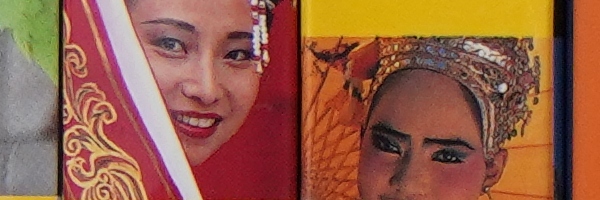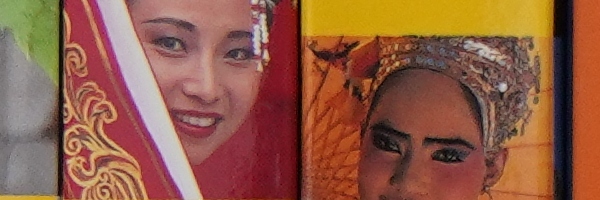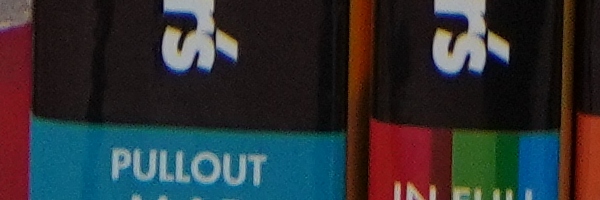Laowa 15mm F/4.5 Zero-D Shift Lens Review
Review
Venus Optics recently launched second-generation shift lenses. The newer Laowa 15mm F/4.5 Zero-D Shift offers Full-Frame coverage for no less than 7 mounts! It captures the same extremely wide 110° angle-of-view as the Venus Optics Laowa 15mm F/4 Macro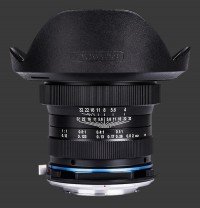
Venus Optics Laowa 15mm F/4 Macro with a very similar maximum aperture of F/4.5, rather than F/4. While the previous lens was capable of close-focus, it could only shift by ±6mm. The new 15mm F/4.5 Zero-D Shift offers ±11mm of shift, which is almost double! Its completely new optical formulation is designed to minimize optical distortion, earning it the Zero-D label.
This lens is one of the few shift lenses for Sony E-mount and by far the widest. Sony does not produce any themselves, so these highly specialized lenses can only be obtained from a third-party. Just like all other Venus Optics lenses, the 15mm F/4.5 Zero-D Shift is a fully-manual lens. Shift lenses never have autofocus but native ones normally allow aperture-control. This Laowa, however, not only requires the aperture to be manual set, it also does not report it to the camera since its mount is purely mechanical.
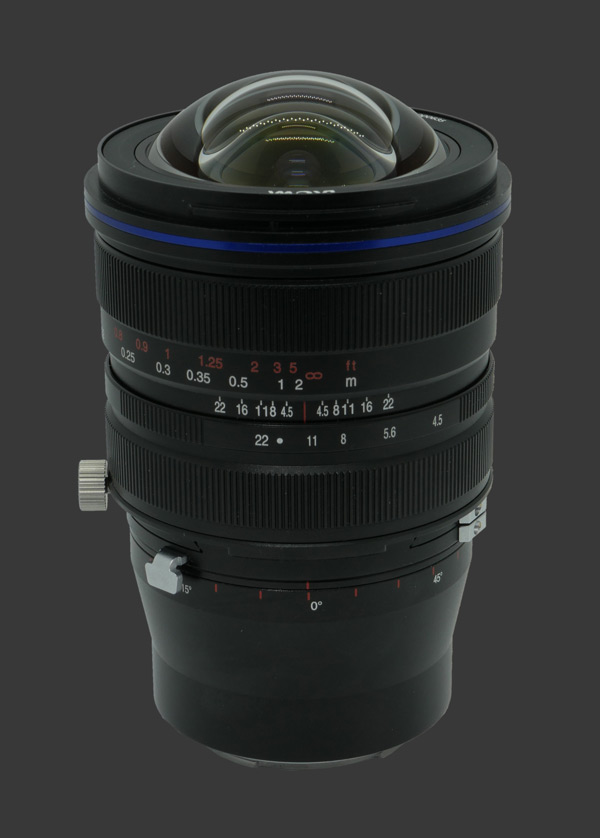
- Unshifted
- -11mm Vertical
- +11mm Vertical
- -11mm Horizontal
- +11mm Horizontal
The Venus Laowa 15mm F/4.5 Zero-D Shift is an extreme-wide prime lens with moderately narrow maximum aperture. Its focal-length is ideal for capturing images of architecture, monuments and enormous interiors. It front assembly can be shifted by up to 11mm to avoid keystoning which cements its suitability for architectural photography. Shift lenses are almost exclusively used for architecture but artists are free to get creative with other subjects. For its primary purpose, photographs are generally captured with a narrow aperture and Venus Optics took advantage of this to construct a less heavy lens.
Focus can be achieved at 20cm from the sensor-plane. Although Venus Optics does not specify magnification, this can be estimated using trigonometry, which resolves to about 0.16X. Unlike the F/4 version, this is not a Macro lens. It does feature many more optical elements to reduce optical distortion. The front bulbous element of this lens prevents using front-mounted filters and requires a special lens-cap to protect it.

Construction
Specialized lenses are almost always heavy and the Laowa 15mm F/4.5 Zero-D Shift is no exception. This is a hefty lens that weighs 734g while just measuring over 13.5cm long. Note that these are in-house measurements and they differ from official measurements of 597g and 10cm provided with the press-release. This is over a 15% difference! No caps were on during measurement, so the extra weight is unaccounted for.
This Shift lens is entirely constructed of metal with very tight tolerances. Although it is not sealed against adverse weather, the lens feels extremely solid. The special lens cap attaches to the lens via a bayonet mount at the front. Although it cannot be used to install a lens hood, one can mount a frame to hold extra-large 100mm filters. Keep in mind that this is going to be mostly pointless except for ND filters due to its extremely-wide angle-of-view.
A wide ring at the front turns to adjust focus. This is a Manual-Focus Only lens and so its focus-ring is crucial. The rings very smoothly with sufficient resistance to minimize accidental changes. It links to the internal-focus system mechanically. With a throw of 90° that is highly compressed further out, achieving critical is on the difficult side. One must rotate the focus-ring extremely slowly to nail focus.
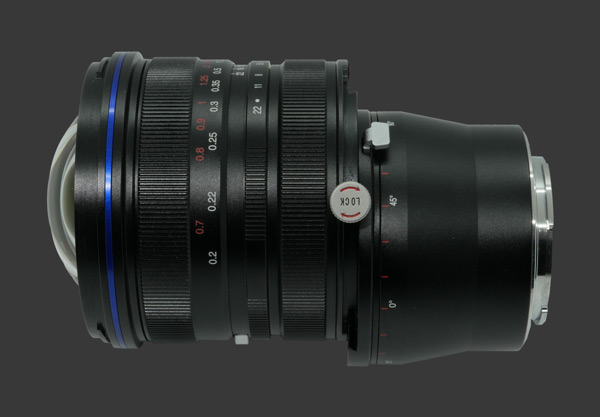
Toward the middle of the lens barrel, there is slim aperture-ring. It rotates 45° from the widest F/4.5 aperture to F/22. There are soft detents at full-stops but the aperture is continuously variable and can be stopped anywhere. Since the lens does not report the set aperture to the camera, it is only possible to expose consistently at full-stops. This also means that one has to look at the barrel itself when adjusting aperture which becomes problematic during night photography. Some phosphorescent paint would have been quite helpful here.
There is third ring right behind the aperture-ring to control shift. This one is very similar to the focus-ring except without the distance-scale. Instead, two metal segments, one either side of where the lens shifts show a scaled marked in millimeters with the centered-position designated by a red line. This is the smoothest shift mechanism tested. The ring rotates smoothly and afford great precision. A small knob on the edge of the ring can be tightened to lock shift. The front of this lens is so heavy that it can easily drift when shift is unlocked.
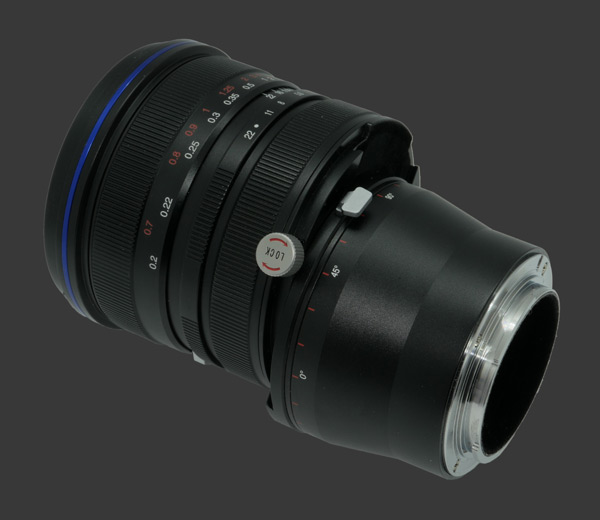
The lens barrel of the Laowa 15mm F/4.5 Zero-D Shift splits in two placed. One is where the front of the lens shifts relative to the back, the other adds a rotation axis to orient the front of the barrel. This makes it possible to apply shift in any direction. A spring-loaded level must be pushed towards the barrel to release the rotation mechanism. There are detents mark 15° increments and markers every 45°.
The construction of this is truly outstanding. It shows one of the best build-quality among third-party lenses. Internal mechanisms keep parts of the barrel tightly together and well-aligned. Every ring is mechanical which makes it very tactile and absolutely responsive.
Venus Laowa 15mm F/4.5 Zero-D Shift Sharpness
The extreme ambition of this lens is incredible! Ultra-wide-angle lenses are the hardest to design, particularly with Full-Frame coverage. To allow Shift movement, a lens requires an even larger imaging circle. Venus even supports mounting this lens onto a Medium Format GFX-system camera using an adapter to convert a Nikon F or Canon EF mount version. Attempting this with zero distortion is a moon-shot.
Sharpness is the most crucial aspect of lens performance since nothing can compensate for a loss of resolution. There are essentially two concentric image-circles with a shift lens. One always expects maximum sharpness in the center. The inner circle corresponds to full-frame coverage which must be sufficiently sharp for the lens to be useful. The outer imaging-circle determines how much shift movement can be dialed-in while maintaining reasonable sharpness. To measure this, a completely different setup than usual is required. Multiple frames were captured with the lens unshifted and then shifted to its maximum in one direction. This produces two overlapping images that can be compared by subject and image area as seen below.
The group of 4 images shown below are 100% crops captured using this lens at the selected aperture. From top to bottom, these crops are: The center of the frame with the lens centered, the upper edge of the image with the lens shifted down 11mm, the center of an image captured with the lens shift 10mm downward and the lower edge of the same image with the lens centered.
Select the captured aperture to see the crops taken at that stop. When judging image quality, understand that these are crops from a 61 MP image that is normally used to print images up to 45x30". On a computer display, these often appear much larger which magnifies image defects.
The center sharpness of the Venus Laowa 15mm F/4.5 Zero-D Shift lens is excellent. From its maximum F/4.5 aperture until F/9.5, details are perfectly captured in the center of images. Minor softness is apparent along edges of the inner imaging-circle at moderately wide apertures. Fine details are rendered sharply from F/8 onward and critical sharpness is reached at F/11, just before diffraction sets in. For architecture photography for which this lens is intended, the sweet spot coincides with commonly used apertures.
With the lens shifted near its maximum, the optical center of the front element aligns closely with its edge when the lens is unshifted. Sharpness at the center of the frame is good from wide open, improves at F/8 and is perfectly sharp at F/11, matching closely edge-sharpness of the unshifted lens, as expected. The edge of the outer imaging-circle though is visibly softer but not hugely so near maximum aperture. Stopping down to F/6.7 shows visible improvement with light softness. There is gradual improvement as the aperture is closed down until F/11 which is just shy of being completely sharp.
Even without a direct comparison, the sharpness of the Laowa 15mm F/4.5 Shift is impressive. From F/6.7 to F/11, the entire shift range is completely usable. For truly large prints, it is best to keep the lens at F/9.5 or F/11 which produces a deep depth-of-field due to the short focal-length of this lens.
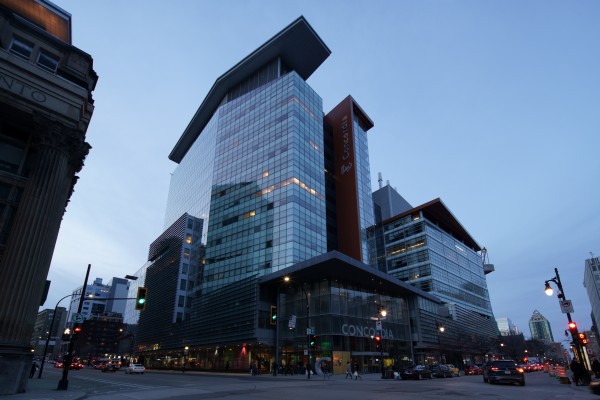 This large building leaves very little room to capture it in its entirety. It would be severely distorted with a standard lens but with shift at its maximum, the Laowa 15mm F/4.5 Zero-D Shift captures it with much less keystoning.
This large building leaves very little room to capture it in its entirety. It would be severely distorted with a standard lens but with shift at its maximum, the Laowa 15mm F/4.5 Zero-D Shift captures it with much less keystoning.
Image Quality
Venus Optics created a lineup of Zero-Distortion lenses with the aim to fully correct distortion optically. Given that these lenses do not communicate with camera bodies, they cannot rely on built-in processing for correction. The Laowa 15mm F/4.5 is labeled as a Zero-D lens and, indeed, optical distortion is low. While minimal, some distortion is visible in images.
A slight amount of barrel distortion is apparent in straight lines near the periphery of the frame. Minimal pincushion distortion occurs halfway from the center to edges too. Together this makes long straight lines slightly wavy which would be extremely difficult to fully correct by software. Maximum distortion is below 2% which is why the issue is only apparent with certain subjects.
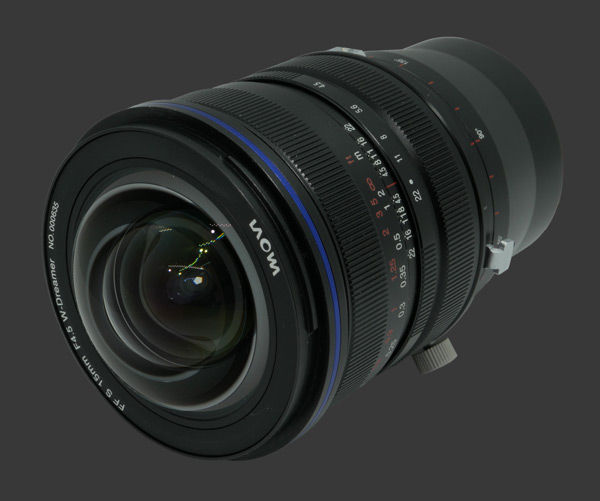
It is absolutely remarkable how little vignetting this lens has! Even without any software correction which cameras cannot apply automatically to a lens without electrical contacts, vignetting is imperceptible with the lens centered. Shifting up to 8mm maintains minimal vignetting too. Going beyond that adds less than ½-stop of corner shading which is better than any other wide-angle lens.
Contrast is quite good with this lens, although a little more subdued compared to best-in-class lenses but many of those cost at least twice as much. Flaring is very well-controlled. Small light sources within the frame are rendered crisply. Larger ones occasionally create an area of low contrast, mostly when the are close to the edge of the frame. With its 5-blade aperture stopped down, lights turn into pleasing 10-point star-bursts.

Conclusion
With the widest field-of-view of any shift lens on the market, the Laowa 15mm F/4.5 Zero-D Shift is a truly unique lens. By allowing ±11mm of shift with a 110° viewing-angle, this prime lens is ideally suited for architecture photography. It can capture images of huge building, enormous monuments and cavernous interiors with less perspective distortion than any lens on the market.
Image quality is exceptional. There is very good sharpness across the entire frame around F/8 and it is well-maintained even after a significant shift. Peak sharpness at F/11 is excellent. There is only a small amount of softness towards edges of the shifted image-circle, where the lens remains easily usable for typical print-sizes. A slight yet complex distortion can be seen in straight lines that cross a wide area of the frame. It is very minor but is visible on certain subjects. This 15mm F/4.5 Shift resists most flares well and shows virtually no vignetting!
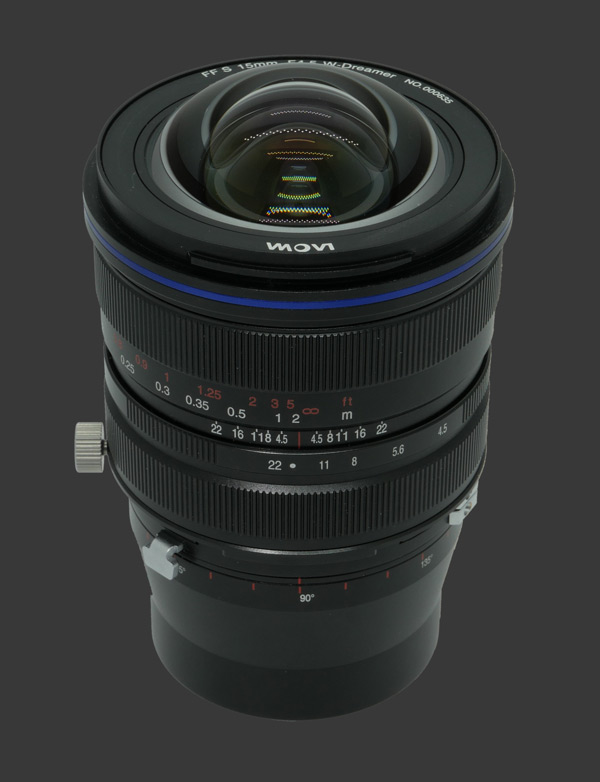
Construction of the Venus Laowa 15mm F/4.5 Zero-D Shift is top-notch. The metal body of this lens is very solid. The focus and shift rings rotate completely smoothly, while aperture-rings and shift axis rotation offers detents to achieve repeatable results. This is a hefty lens that might be too heavy for travel photographers yet is around the same weight as other shift lenses.
Downsides for this lens are mostly the same as for other entirely mechanical lenses. Everything must be manually controlled and it can be difficult to operate in the dark since both focus is difficult to confirm on an amplified EVF and markings on the lens cannot be seen. Achieving perfect focus so that images can be captured with critical sharpness is time-consuming.
The Laowa 15mm F/4.5 Zero-D Shift is the lens to acquire for architecture photography. Mirrorless users have no other choice but even DSLR owners are going to be highly impressed by images captured using this lens. The minor inconvenience of completely manual controls is easily out-weighed by the exceptional image-quality of this lens. Venus priced this lens very competitively too.
Please Support Neocamera
All information on Neocamera is provided free of charge yet running this website is a huge endeavor. Purchases made via affiliate links found throughout the site help keep it running and up-to-date. There is no additional cost to you, so please consider buying via these links to our affilates:
Thank you for your support!
Shift Photography
Most lenses have all optical elements aligned so that a straight axis starting in the middle of the sensor perpendicularly passed through the optical center of all lens elements. The distance of those elements changes along the axis changes to adjust focus and zoom, when applicable.
A Shift lens like the Laowa 15mm F/4.5 Zero-D Shift breaks this rule by allowing a number of elements towards the front move perpendicularly to their optical axis. Pentax DSLR are capable of creating a similar alignment change by moving their sensors, although with a much more restricted range of motion.
By creating a disparity between the optical alignment of the lens and sensor, it is possible to capture subjects offset from the frame without perspective distortion, also called keystoning.
Shifted - Hover for Unshifted - Courtesy of Venus Optics.
Minimizing keystoning is highly desirable when photographing architecture, since it makes building geometry more natural. It is possible to capture other subjects with this type of lens, yet the impact is much less apparent when there are few converging straight lines and generally not worth the price, weight and complexity.
There is another major application for Shift lenses. By keeping the sensor immobile yet moving the front of the lens, it is possible to photography overlapping regions of the subject without paralax problems. The result is a set of images that can be easily assembled into a panorama.
Image Assembly - ©2020 Richard Wong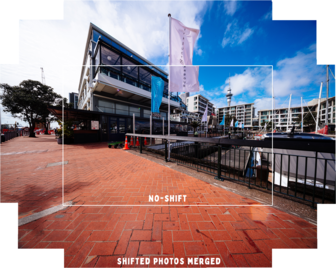
The axis of a shift lens must be rotated to allow movements in different directions, so the above image requires full shift motion ±11 with the axis at 0°, 45° and 90°. There is a clear limit to panoramas created this way but it avoid alignment issues.
Updates
2025.11.13

Best Gifts for Photographers in 2025 by Budget
The annual Neocamera Photography Gift Guide updated to 2025. Find great gifts for photographers with any price budget.
2025.07.07

Stellar Photo Recovery Review
Review of Stellar Photo Recovery V12. This Windows and MacOS software can recover photos and videos in a huge number of formats from memory cards, USB drives, SSDs and HHDs.
2025.05.14

Huion Kamvas 13 Gen 3 Review
In-Depth review of the Huion Kamvas 13 Gen 3 Pen Display Tablet for photographers and graphic artists.
2025.01.18

Fujifilm GFX 2025 Lens Roundup
Lens Review roundup of Fujifilm GFX Medium-Format lenses. Quality, performance and handling of the GF20-35mm F/4R WR, GF30mm F/3.5 Tilt-Shift and the GF55mm F/1.7.
2024.11.18

Best 2024 Photography Gifts for Every Budget
Great gifts for photographers and photo enthusiasts selected for every budget among the best products of 2024.
2024.08.07

Eye Protection Tips for Professional Photographers
The four main considerations for professional photographers regarding eyewear.
2024.07.14

Fujifilm X100VI Review
Flagship fixed-lens compact digital camera with a 40 MP sensor and Image-Stabilization, a first for the series. Retro design featuring dual control-dials, plus direct ISO, Shutter-Speed and EC dials. Its hybrid viewfinder can switch between EVF and OVF mode.
2024.05.09

Fujifilm GFX100 II Review
Flagship 102 Megapixels Medium-Format Mirrorless Digital Camera with 8-Stop 5-Axis IBIS, 8 FPS Drive, 8K Video and 400 MP Super-Resolution capture in a weatherproof and freezeproof body with dual control-dials and dual memory-card slots.
2024.04.03

Fujifilm X-T5 Review
Newest Fujifilm flagship boasting a 40 MP APS-C sensor, 5-axis IBIS with 7-stop efficiency, 15 FPS continuous drive, 6.2K Video capture, dual control-dials and dual SDXC UHS-II slots in a sturdy weatherproof and freezeproof body.
2023.11.20

Best Digital Cameras of 2023
Find out which are the Best Digital Cameras of 2023. All the new Mirrorless Digital Cameras from entry-level to high-end professional.
2023.07.10

Fujifilm X-H2 Review
40 Megapixels APS-C Hybrid Mirrorless Digital Camera with 7-stop IBIS. Fastest shutter ever and 8K video capture. Large builtin EVF with 0.8X magnification and 5.8 MP, plus an Eye-Start Sensor. Packed with features and large number of controls in a weatherproof and freezeproof body.
2023.05.07

Sony FE 20-70mm F/4G Review
Review of the unique Sony FE 20-70mm F/4G lens. The optical zoom of this lens spans ultra-wide-angle and medium focal-length coverage, making it one of the most versatile Full-Frame lenses on the market.
2025.11.13
2025.07.07
2025.05.14
2025.01.18
2024.11.18
2024.08.07
2024.07.14
2024.05.09
2024.04.03
2023.11.20
2023.07.10
2023.05.07
NEWS
2025.12.02

Sony Upgrades Alpha 7 to 5th Generation
Digital Camera ○ Lens
2025.11.29

Venus Optics Releases New Zero-D Tilt-Shift Macro Lens
Lens
2025.11.23

Best Digital Cameras of 2025
Digital Camera
2025.11.14

Photography Gift Guide 2025 Edition
2025.11.06

Canon Announces Third-Generation R6 Mirrorless
Digital Camera ○ Lens
2025.10.23

Fujifilm Launches X-T30 III Plus New Wide Zoom
Digital Camera ○ Lens
2025.10.21

Peak Design Unveils Field Plate and Form Straps
2025.10.16

Nikon Unveils Z-Mount DX Lens Duo
Lens
2025.10.16

Venus Optics Unveils Fast Telephoto Prime Lens
Lens
2025.10.01

Think Tank Photo FocusPoint RollTop Backpacks
Bag
2025.09.30

Sony Produces Super Macro GMaster Lens
Lens
2025.09.17

Venus Optics Created First Telephoto Ultra-Macro Lens
Lens







